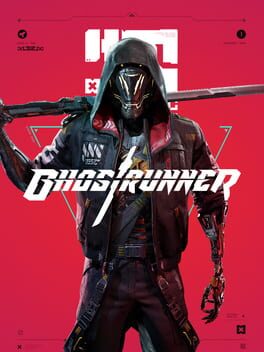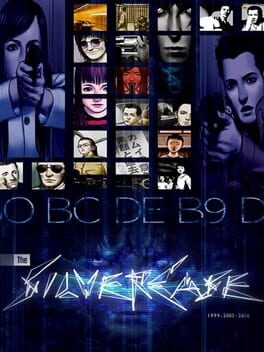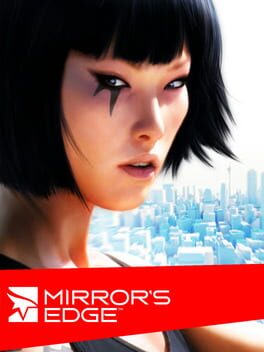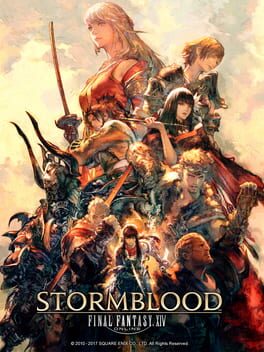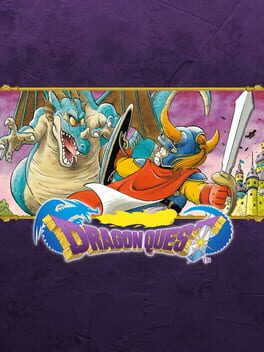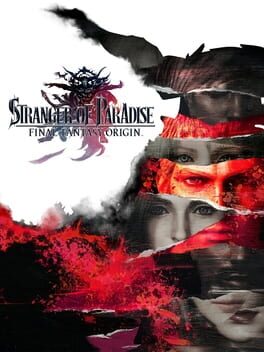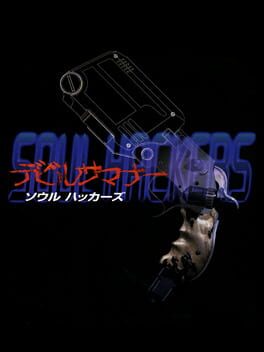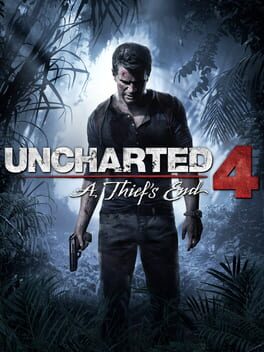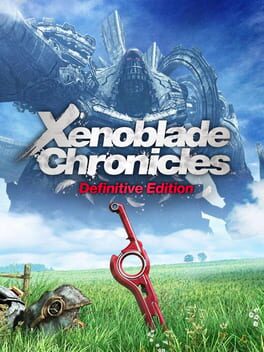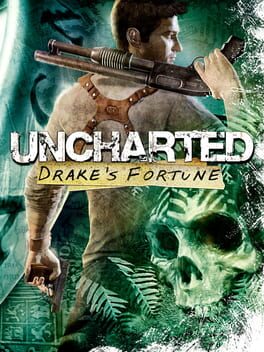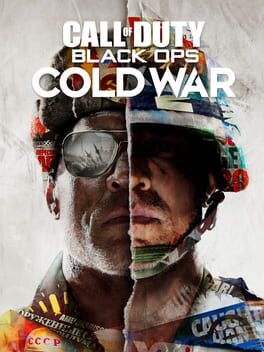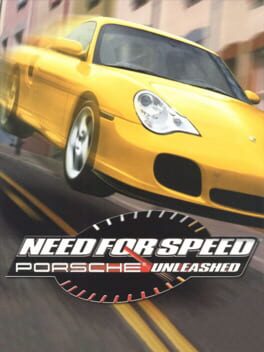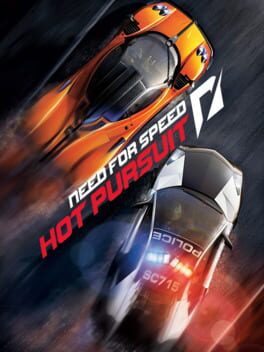SpaceTacos
2020
What starts as simply Hotline Miami with cyberpunk ninjas turns into the best Sonic game of the century once you start learning even the most basic speedrun tech.
Yes, the story is painfully thin, and half of the boss fights are essentially first-person Simon Says, but the aesthetics are on point, core movement is stellar and level design is rather competent. It's addictive enough to at least get you interested in speedrunning the game, and it's very rewarding when you do.
Yes, the story is painfully thin, and half of the boss fights are essentially first-person Simon Says, but the aesthetics are on point, core movement is stellar and level design is rather competent. It's addictive enough to at least get you interested in speedrunning the game, and it's very rewarding when you do.
2016
If you thought Killer7 was wild, here's a PS1 detective/horror visual novel presenting the concept of crime as a transmittable virus, literally and figuratively. But it is also a metanarrative about choice, determinism and individuality with social commentary about nascent radicalized internet culture and capitalism just sucking ass in general.
It's rather dated in terms of controls and puzzles, and it does test your patience a lot (especially in the last couple of hours), but it is an unforgettable experience. Probably one of the most stylish 90s titles with its slick dynamic UI and fantastic music by Masafumi Takada, it is a masterfully written story that serves as a thematic foundation and a skeleton key to the rest of Suda51's body of work.
It's rather dated in terms of controls and puzzles, and it does test your patience a lot (especially in the last couple of hours), but it is an unforgettable experience. Probably one of the most stylish 90s titles with its slick dynamic UI and fantastic music by Masafumi Takada, it is a masterfully written story that serves as a thematic foundation and a skeleton key to the rest of Suda51's body of work.
2008
While there are recent games that have done first person movement slicker and faster, Mirror's Edge still has some magic left in it in 2020. The clean minimalist aesthetic hasn't aged a day, and I can't even describe how physical the game feels. There's weight in your every move, the chase sequences are tense even on replays, and god falling down from a roof is just terrifying.
There's some jank in there, a terrible story and godawful combat, but first couple hours are still kino. Throw in another star, if you're into time trial modes.
There's some jank in there, a terrible story and godawful combat, but first couple hours are still kino. Throw in another star, if you're into time trial modes.
2001
No More Heroes 2 does have some redeeming qualities. The visuals are improved, the boss fights are mostly more fun and creative, the soundtrack is arguably better than NMH1's. The opening hour promises more violent action, horny dialogue and intriguing narrative of a somewhat darker tone.
But then it doesn't take long for everything to start coming apart at the seams. Let's address the elephant in the room first -- Santa Destroy's no longer explorable and has been reduced to a list of shops, missions and side jobs. It's not like the city in NMH1 was particularly fun to explore, but it gave you with an opportunity to settle down and get a sense of this place. Santa Destroy used to have character, and now it's just a barely recognizable monochrome map screen. More importantly, city exploration helped with the original game's pacing. Having to earn money to enter the next proper level provided the player with some down time to wind down and goof off. Go dumpster diving, find lost cats, search for collectibles, do combat challenges. And this kind of work ethic was a tangible foundation of one of the game's themes.
None of that is present here. Jobs are still there (now functioning as cute and somewhat fun NES-style mini-games), but they only serve as a way for the player to earn money. Where to spend that hard-earned cash? Well, there are two swords for sale, one of which could even be considered useful. You can buy new clothes, but that also comes with another disappointment. Airport51 now sells goofy themed outfits and shirts you can barely see under the jacket. Part of the fun of going all "fashion souls" in NMH1 was that it reflected Travis's personality. Of course he'd be happy to proudly wear a MIAMI BASS t-shirt under a tacky white jacket. But a "nerd" or cyber goth outfit? That's Silent Hill bonus content levels of comedic.
The aforementioned broken pacing means that the player will go through the levels quickly, barely stopping in-between. And since the gameplay in the levels is mostly just mashing through waves of goons, it's doesn't take long to start feeling burnt out. The designers try their best by introducing different types of baddies and mixing them, but by the end they just give up and have you cut through an endless stream of enemies that all take way too long to kill. One of the end game levels starts with a 10-minute section of just fighting waves of dudes in a parking lot. That's it.
At least those levels lead to generally quite good bosses that never fail to put a unique spin on the usual fights. They're not always challenging, but my monkey brain still appreciates the spectacle. But herein lies my main complaint. In NMH1 all bosses were an important part of the narrative. Engaging with their personalities and various outlooks on killing as an activity served as a boost for Travis's tangible character growth. In NMH2 you get flashy and colorful characters that are mostly just archetypes of various facets of the entertainment industry, and that's about it. Not much of a foundation for thematic exploration. In fact, the interactions with the assassins are generally so brief the game tries to provide intriguing background info in disconnected monologues given by Sylvia in cutscenes, not in a dialogue with Travis.
NMH2 actually takes on quite a few things narratively -- Travis is confronted with the consequences of his actions in the first game, not just in the way of a revenge plot that kicks things off, but also in that he has become a proper figure of myth, an inspiration to many "performers" that want in on the new assassination entertainment craze and to wearied souls that just want to find an out of this vicious circle of bloodshed. Travis is no longer a goofy otaku that he was a game ago. I mean, he still jacks off to anime and occasionally acts as a gullible oaf, but he's mostly proper cool now, no longer posing. He's a knight on a noble quest, and in the end he gets the girl and finds paradise. And this is fine. After all, NMH1 did lay down considerable growth for his character. But it doesn't feel like Travis has moved anywhere internally throughout this journey. In fact it's his relationships to other people that make progress instead. There's a romantic attachment to Sylvia, an unwanted mentor position with Shinobu, and begrudging respect shared between Travis and Henry. It's almost as if this thread of Travis finally making a set of close connections should intersect with the ongoing exploration of grief and revenge that takes most of the place in the plot, but there's no connective tissue here.
A lot of the game feels like it's missing something, be it weapons, open world exploration, level variety or thematic focus. NMH2's development cycle was infamously rocky, with Suda being mostly hands off with the game and some aspects having been changed almost last minute. And there's an occasional glimmer of detail that shows this game never quite reached its aspirations in full. Travis's motel suite is getting redecorated with every collectible you find. Every shop can be fully explored for no real reason. Santa Destroy is mostly finished in the credits sequence. Hell, there are two bonus characters with unique movesets that are barely utilized. Unfortunately, this isn't quite enough to excuse the flaws the game has. And quite frankly the last hour or so of your playthrough is guaranteed to leave a sour aftertaste. But I can't help but think it would not be fair to dismiss the game outright. It's jank but not soulless.
But then it doesn't take long for everything to start coming apart at the seams. Let's address the elephant in the room first -- Santa Destroy's no longer explorable and has been reduced to a list of shops, missions and side jobs. It's not like the city in NMH1 was particularly fun to explore, but it gave you with an opportunity to settle down and get a sense of this place. Santa Destroy used to have character, and now it's just a barely recognizable monochrome map screen. More importantly, city exploration helped with the original game's pacing. Having to earn money to enter the next proper level provided the player with some down time to wind down and goof off. Go dumpster diving, find lost cats, search for collectibles, do combat challenges. And this kind of work ethic was a tangible foundation of one of the game's themes.
None of that is present here. Jobs are still there (now functioning as cute and somewhat fun NES-style mini-games), but they only serve as a way for the player to earn money. Where to spend that hard-earned cash? Well, there are two swords for sale, one of which could even be considered useful. You can buy new clothes, but that also comes with another disappointment. Airport51 now sells goofy themed outfits and shirts you can barely see under the jacket. Part of the fun of going all "fashion souls" in NMH1 was that it reflected Travis's personality. Of course he'd be happy to proudly wear a MIAMI BASS t-shirt under a tacky white jacket. But a "nerd" or cyber goth outfit? That's Silent Hill bonus content levels of comedic.
The aforementioned broken pacing means that the player will go through the levels quickly, barely stopping in-between. And since the gameplay in the levels is mostly just mashing through waves of goons, it's doesn't take long to start feeling burnt out. The designers try their best by introducing different types of baddies and mixing them, but by the end they just give up and have you cut through an endless stream of enemies that all take way too long to kill. One of the end game levels starts with a 10-minute section of just fighting waves of dudes in a parking lot. That's it.
At least those levels lead to generally quite good bosses that never fail to put a unique spin on the usual fights. They're not always challenging, but my monkey brain still appreciates the spectacle. But herein lies my main complaint. In NMH1 all bosses were an important part of the narrative. Engaging with their personalities and various outlooks on killing as an activity served as a boost for Travis's tangible character growth. In NMH2 you get flashy and colorful characters that are mostly just archetypes of various facets of the entertainment industry, and that's about it. Not much of a foundation for thematic exploration. In fact, the interactions with the assassins are generally so brief the game tries to provide intriguing background info in disconnected monologues given by Sylvia in cutscenes, not in a dialogue with Travis.
NMH2 actually takes on quite a few things narratively -- Travis is confronted with the consequences of his actions in the first game, not just in the way of a revenge plot that kicks things off, but also in that he has become a proper figure of myth, an inspiration to many "performers" that want in on the new assassination entertainment craze and to wearied souls that just want to find an out of this vicious circle of bloodshed. Travis is no longer a goofy otaku that he was a game ago. I mean, he still jacks off to anime and occasionally acts as a gullible oaf, but he's mostly proper cool now, no longer posing. He's a knight on a noble quest, and in the end he gets the girl and finds paradise. And this is fine. After all, NMH1 did lay down considerable growth for his character. But it doesn't feel like Travis has moved anywhere internally throughout this journey. In fact it's his relationships to other people that make progress instead. There's a romantic attachment to Sylvia, an unwanted mentor position with Shinobu, and begrudging respect shared between Travis and Henry. It's almost as if this thread of Travis finally making a set of close connections should intersect with the ongoing exploration of grief and revenge that takes most of the place in the plot, but there's no connective tissue here.
A lot of the game feels like it's missing something, be it weapons, open world exploration, level variety or thematic focus. NMH2's development cycle was infamously rocky, with Suda being mostly hands off with the game and some aspects having been changed almost last minute. And there's an occasional glimmer of detail that shows this game never quite reached its aspirations in full. Travis's motel suite is getting redecorated with every collectible you find. Every shop can be fully explored for no real reason. Santa Destroy is mostly finished in the credits sequence. Hell, there are two bonus characters with unique movesets that are barely utilized. Unfortunately, this isn't quite enough to excuse the flaws the game has. And quite frankly the last hour or so of your playthrough is guaranteed to leave a sour aftertaste. But I can't help but think it would not be fair to dismiss the game outright. It's jank but not soulless.
2004
There's a common misconception that the original Dragon Quest, as most early JPRGs, is a bit on the grindier side. That, of course, is not true. The game does not have periods of grinding taking you away from the progression. Instead, the core of the game, the one way to solve all problems and what defines the progression, is grinding.
Let me back up a bit. Released in 1986, originally on Famicom, DQ1 is one of the earliest attempts to translate the complicated and rather niche CPRGs of time to a simpler template and simultaneously lower the barrier to entry by releasing the game on a home console. As a result, the first Dragon Quest is a very simple game. You control a silent hero, named by the player, who happens to be a descendant of a legendary figure of ages past. The king of the land asks you to save his daughter and rid the kingdom of a powerful Dragonlord, whose minions are terrorizing the surrounding continents. A simple premise goes along with simple game design. There's no party to control, just your one protagonist. As a result of that, there's no separation of roles -- the hero is a warrior, a mage and a healer all at once. Stats exist (strength, vitality and speed) but have no real importance beyond showing your current power level. Thus, the core gameplay loop is laid down: follow a clue and investigate the world map -> encounter new enemies -> beat the enemies until you get your numbers up/save enough for new gear/feel comfortable doing random encounters -> go to the next region with stronger enemies to pursue the plot and repeat.
The combat does not offer many options. You are limited to:
- sword swings;
- fire spell;
- stronger fire spell;
- sleep spell;
- silence spell.
The thing about the damaging fire spells is that, since there's no stat governing magic damage, eventually (just in a couple levels even) your basic physical attack with outnumber the spell. Sleep barely works (at least on the SFC version I played) and is thus a waste of a turn. Silence is situationally useful as a counter to the enemies' Sleep spell, but usually it only saves you from one or two unnecessary hits. This lack of options means that all the fights in the game can be represented as a battle of resources, where the player's actions follow a simple algorithm: exhange hits with the enemy until your HP reaches x, then heal, repeat; if no more MP, use healing herbs; if no more herbs, go and grind until your numbers are high enough to not run out of resources in the fight. The only exceptions to this seem to be the first boss battle against a dragon, whom you can apparently put to sleep, if you're lucky enough, and the second boss battle against the Golem, whom you can also put to sleep by using a key item, which is the intended way to do that fight. For the rest of the game, grinding is your only solution.
The other design choice that you might notice is that a lot of parts in the system become outdated and replaced. The initial Fire spell is a good example, as it lasts exactly a couple levels until your physical attacks become as strong as the magic spell. But there are also various items that are at some point replaced by field magic. Torches are an important part of the early game. You absolutely need them to explore various pitch black caves on the map, so you need to have a couple torches in your inventory at all times (your limited inventory, mind you). But only until you learn a spell that functionally replaces torches for good. The same happens with teleport items and holy water, an item that turns off random encounters. It's all convenient and welcome, but it also feels less like an upgrade and more like the game presenting you with solutions to a problem it itself created.
Now, I realize the paragraphs above read exceptionally negative, but it's not my intent to bash a pioneering game for having outdated design philosophy. In fact, there are a lot of things DQ1 does right and that have formed (at least part of) the skeleton of the genre for years to come, from map design and random encounters to town layouts to multiphased boss fights. But what I think the game does best is the Quest part of its title. The adventure you set out on is actually quite simple as it leads you back and forth across the rather small-scale map of the kingdom. Every step makes logical sense and talking to NPCs in towns gives you clues about where to go next. They never feel particularly cryptic, and right away you're given several clear long and short term objectives. It's never "uhhhh I need to find a generic NPC in one of the towns and show him this new key item, because apparently that generic NPC is not so generic after all".
You also constantly keep looping back to the starting castle, which in the older versions of the game, is the only place where you can save. So you're actually slowly exploring the world outwards from the center, going in alternating directions, which works quite well for a world this small and densely packed (the final dungeon is literally visible from the starting point on the world map). The whole thing feels like a tabletop short story presented for a single player, which is the vibe the developers were aiming at here, I'm guessing.
The other thing I admired about DQ1 is its character and presentation. The admittedly limited writing here manages to not only set up the general conflict and the backstory, but also not be as dry as some of the other titles of the era (looking at you, FF1). Talking to NPCs in towns often gives you little stories to go along with them instead of the generic greetings and information about the town/next dungeon. There's a couple in the castle who are deeply in love, there's a girl in the starting town who says that you're so handsome she's not gonna lose sight of you, and she then proceeds to follow you around town until you leave. Even the generic weapon shopkeeper is like "well, yes, why wouldn't you want to equip this fantastic gear you bought right away? it's only natural" every time you buy something. The protagonist is a blank slate with no standout features, except for the horned helmet. Yet I was delighted to see that, after you rescue the princess from the dungeon guarded by a dragon, the hero carries her in his arms and it's actually reflected in the spritework. The fact that you have to carry the princess back to the castle (suprising the NPCs on the way with good news) is also a neat bit of character to remember the game by.
In the end, DQ1 is more of a historical curiosity, offering insight into very early JRPG design. But its short runtime (6-7-ish hours for me) and colorful presentation counterbalance the chore of grinding, resulting in a surprisingly enjoyable experience for a game that is more than 35 years old at this point.
Let me back up a bit. Released in 1986, originally on Famicom, DQ1 is one of the earliest attempts to translate the complicated and rather niche CPRGs of time to a simpler template and simultaneously lower the barrier to entry by releasing the game on a home console. As a result, the first Dragon Quest is a very simple game. You control a silent hero, named by the player, who happens to be a descendant of a legendary figure of ages past. The king of the land asks you to save his daughter and rid the kingdom of a powerful Dragonlord, whose minions are terrorizing the surrounding continents. A simple premise goes along with simple game design. There's no party to control, just your one protagonist. As a result of that, there's no separation of roles -- the hero is a warrior, a mage and a healer all at once. Stats exist (strength, vitality and speed) but have no real importance beyond showing your current power level. Thus, the core gameplay loop is laid down: follow a clue and investigate the world map -> encounter new enemies -> beat the enemies until you get your numbers up/save enough for new gear/feel comfortable doing random encounters -> go to the next region with stronger enemies to pursue the plot and repeat.
The combat does not offer many options. You are limited to:
- sword swings;
- fire spell;
- stronger fire spell;
- sleep spell;
- silence spell.
The thing about the damaging fire spells is that, since there's no stat governing magic damage, eventually (just in a couple levels even) your basic physical attack with outnumber the spell. Sleep barely works (at least on the SFC version I played) and is thus a waste of a turn. Silence is situationally useful as a counter to the enemies' Sleep spell, but usually it only saves you from one or two unnecessary hits. This lack of options means that all the fights in the game can be represented as a battle of resources, where the player's actions follow a simple algorithm: exhange hits with the enemy until your HP reaches x, then heal, repeat; if no more MP, use healing herbs; if no more herbs, go and grind until your numbers are high enough to not run out of resources in the fight. The only exceptions to this seem to be the first boss battle against a dragon, whom you can apparently put to sleep, if you're lucky enough, and the second boss battle against the Golem, whom you can also put to sleep by using a key item, which is the intended way to do that fight. For the rest of the game, grinding is your only solution.
The other design choice that you might notice is that a lot of parts in the system become outdated and replaced. The initial Fire spell is a good example, as it lasts exactly a couple levels until your physical attacks become as strong as the magic spell. But there are also various items that are at some point replaced by field magic. Torches are an important part of the early game. You absolutely need them to explore various pitch black caves on the map, so you need to have a couple torches in your inventory at all times (your limited inventory, mind you). But only until you learn a spell that functionally replaces torches for good. The same happens with teleport items and holy water, an item that turns off random encounters. It's all convenient and welcome, but it also feels less like an upgrade and more like the game presenting you with solutions to a problem it itself created.
Now, I realize the paragraphs above read exceptionally negative, but it's not my intent to bash a pioneering game for having outdated design philosophy. In fact, there are a lot of things DQ1 does right and that have formed (at least part of) the skeleton of the genre for years to come, from map design and random encounters to town layouts to multiphased boss fights. But what I think the game does best is the Quest part of its title. The adventure you set out on is actually quite simple as it leads you back and forth across the rather small-scale map of the kingdom. Every step makes logical sense and talking to NPCs in towns gives you clues about where to go next. They never feel particularly cryptic, and right away you're given several clear long and short term objectives. It's never "uhhhh I need to find a generic NPC in one of the towns and show him this new key item, because apparently that generic NPC is not so generic after all".
You also constantly keep looping back to the starting castle, which in the older versions of the game, is the only place where you can save. So you're actually slowly exploring the world outwards from the center, going in alternating directions, which works quite well for a world this small and densely packed (the final dungeon is literally visible from the starting point on the world map). The whole thing feels like a tabletop short story presented for a single player, which is the vibe the developers were aiming at here, I'm guessing.
The other thing I admired about DQ1 is its character and presentation. The admittedly limited writing here manages to not only set up the general conflict and the backstory, but also not be as dry as some of the other titles of the era (looking at you, FF1). Talking to NPCs in towns often gives you little stories to go along with them instead of the generic greetings and information about the town/next dungeon. There's a couple in the castle who are deeply in love, there's a girl in the starting town who says that you're so handsome she's not gonna lose sight of you, and she then proceeds to follow you around town until you leave. Even the generic weapon shopkeeper is like "well, yes, why wouldn't you want to equip this fantastic gear you bought right away? it's only natural" every time you buy something. The protagonist is a blank slate with no standout features, except for the horned helmet. Yet I was delighted to see that, after you rescue the princess from the dungeon guarded by a dragon, the hero carries her in his arms and it's actually reflected in the spritework. The fact that you have to carry the princess back to the castle (suprising the NPCs on the way with good news) is also a neat bit of character to remember the game by.
In the end, DQ1 is more of a historical curiosity, offering insight into very early JRPG design. But its short runtime (6-7-ish hours for me) and colorful presentation counterbalance the chore of grinding, resulting in a surprisingly enjoyable experience for a game that is more than 35 years old at this point.
If there's one word that describes Xenoblade Chronicles, it's massive. It can be applied to its general run time (114 hours on my save file when I decided I had enough and deleted the game from the Switch), to its world (two huge titan mechas frozen mid-combat), to its level design attitude (it's like as if Todd Howard never lied to us--you truly can go there), number of side quests (about 450) or to its set of systems underlying most game mechanics (affinity is everything and everywhere). It might not be the most ambitious game I've ever played, but it's up there, and it originally being a Wii title is all the more stunning. But what makes it stand out to me is that all of its parts cohere into a complete functional experience.
Let me back up for a second. Xenoblade is a JRPG developed by Monolith Soft and is part of the unofficial "Xeno" franchise that includes Square's Xenogears (1998) and Namco-published Xenosaga (2002-2006). All titles conceptualized and written by the Monolith Soft president Tetsuya Takahashi, a noted mecha nerd and Nietzsche enjoyer. Xenogears was his first foray into game directing and is infamous for having a second disc that mostly has the characters monologuing as if in a VN. Pressed for time, Takahashi just couldn't agree to releasing the first disc as a separate game. He had to preserve his vision and ensure that the story had a chance of seeing completion at least in some form, hence the compromise. Add to it the fact Xenogears was only part 5 of 6 in a potential franchise with a narrative tracing a universe from its birth to decay, and, yeah, it kind of underdelivered, right? Despite becoming a cult classic, Xenogears never received a sequel and Takahashi left to form his own company, Monolith Soft, where he tried it all again with Xenogears, a multimedia project that was announced as a 6-part game series, later shortened down to 3. Extensive rewrites were made during development so that the story could wrap up in some way towards the end of that third game.
Finally, we have the Nintendo-backed Xenoblade, a title that is not as ambitious in its scale or themes as Takahashi's previous works, but is nonetheless impressive. And it's complete. Actually finished. No compromises. There's a part towards the 50 hour mark where the story reaches a climax and then transitions into Act 2. If the game ended there on a cliffhanger with a sequel to follow, it would've still worked. But it just keeps going for 30-40 hours more, until the story is complete. And it's particularly impressive, considering the game's design started out not with a story outline or a vision for a potential series, but with just a model of the game's world, the aforementioned titans, with everything else stemming from that point.
Here's the setup: the two titans are Bionis and Mechonis. Long ago they fought each other, and after trading fatal blows both died, and eventually on their corpses life sprung up. All kinds of biological flora and fauna on Bionis and machinery on Mechonis. For years the races of Bionis (mostly the humans, called Homs) have been fighting the invading Mechons, a massive army of death machines that have no demands or motives beyond wiping down the opposing life on Bionis. The Mechons are virtually invincible to Homs weapons, and the only thing that can fight against them is an ancient sword called the Monado that, however, demands a lot of power from its wielder. A young Homs named Shulk finds out that not only can he wield the Monado but that it also offers him visions of a possible future.
The premise is very simple, but it offers a truly unique perspective on the setting. Buddy, you are literally climbing a giant mecha. The other mecha is constantly there in the distance. If you look up at any point, you can see different parts of the mecha you are on. It rules. In fact, a lot of the game's early appeal is in the vistas it often presents to the player. The game's world is, quite frankly, gorgeous. Yes, it's blurry 720p (480p on the Wii), but its scale is rendered so beautifully and is only amplified by the environmental design and the music. There's a point still early on in the game where you come into a swamp area, and as the night sets in all the lifeless dry tree branches around you light up in blue hues as if they’re sprouting tiny firefly leaves, ether currents drift in the air making you feel like you're inside the aurora borealis, and one of the best tracks in the game starts playing--a melancholy violin-led tune gently introduced by a piano figure. And seeing that for the first time is damn close to a religious experience. The next area has a giant (truly enormous) waterfall in the background, and it provides a nice vista as you cross the bridge high above the river that flows from it. Except then you realize that the waterfall is not the background, that you can jump in the water and explore the islands and beaches there. Herein lies the downside to the level design--huge scale comes with a lot of empty space, and you're in for a lot of aimless swimming around that waterfall. Granted, there are a lot of fast travel points, but going through fields with not much of note is inevitable and will not be for everyone. In fact, the level design feels very much inspired by sprawling MMORPG maps, with some parts of each area being gated by high(er) level monsters.
Speaking of, monsters use old MMORPG aggro mechanics. Some will attack on sight, some will only be attracted by loud sounds (i.e. running), some only join in if you start attacking their friends. It's lifted straight out of something like FF XI, where a simple act of traversal between hubs could be a dangerous adventure. In this case you are just prevented from accessing certain areas early, but also occasionally a quest will push you into a cave full of giant lvl 80 spiders just to mess with you. Coming back to this world's scale, there's always something out there bigger and stronger than you. You're never truly safe, you have to deal with all the things roaming around.
But there's more. Take the combat, for example. You're exploring in a party of three. You can build your party out of anyone available at a given moment, but all the characters have a specific role to fulfill. Reyn is a tank. Dunban is also a tank, but an agility based one. Melia buffs and deals ether damage. Shulk deals physical damage and dispels enemy buffs, and so on. During combat you can use any of the abilities on your hotbar, and there's a cooldown period before you can use them again. Some attacks require you to be positioned in a specific way relative to the enemy. So basically you will have a rotation of abilities that will be influenced by your role, party synergy and enemy actions. Very much resembling a MMORPG here.
The quests also feel like those created for an MMO experience. Most of them are a simple "kill 5 wolves, bring 3 herbs" kind of affair. Some of the simpler ones will not even require you to hand in the quest when you're done. So here's the general loop: you enter a new hub, pick up all the question marks, go out and about and pick up shinies or kill marked monsters, complete some quests that way, go back to the hub to hand in the rest. Mindless? Yes. Boring? Depends on the area you're in. But I'm the kind of sicko that enjoyed exploration in FF XIV ARR, so I might not be the best person to ask.
You might wonder, if the quests are bad, why even do them? Well, they provide some exp and gold, but really you do them to build up your reputation in a given hub. In-game that's called affinity. Higher affinity unlocks more quests (including those that reward you with new skill trees), provides you with shop discounts and opens up more items for trading with NPCs. Please, bear with me. There's a map in this game that charts the relationships of every important NPC. All of them. They all have names, they are active during certain hours of the day, they have specific positions and scheduled routes. As you talk to everyone in a given town, they hint at their problems and worries or share observations about others. With this new information you can trigger additional dialogue from another NPC, and so on, until you unlock a related quest. The outcome of that quest might affect relationships between certain NPCs. Sometimes there's a good outcome and a bad outcome, sometimes both are valid. You might ruin someone's marriage or boost another person's career. Some quests are mutually exclusive for that reason. I think this is genuinely a very cool system that brings some life into these dummies, and it is used for a masterful gut punch towards the end of the game. But sadly, the system is underutilized. The scale is impressive, but grinding through a lot of it is a chore with next to no immediate reward, and I can see a lot of people getting annoyed by it and not engaging with it any further.
And then there's the party affinity, because you can build up relationships between all the playable characters as well. You can help them up when they’re down and encourage them during combat. You can initiate quests with them in party and hear the banter evolve as you get further down the relationship. You can gift the things you find in the overworld--everyone's got their likes and dislikes. And why do that? Well, some optional scenes are locked until you get to a certain affinity level between two characters. You can share additional passive skills between party members. And you get better results crafting gems--oh god, I forgot about crafting.
There's a lot of excess with these systems, I won't deny that. But it's very impressive how integrated they are into everything you do in a way that feels actually planned out in detail. Coming back to the first paragraph--these are complete meaningful systems. Grindy and underutilized, yes. But they don't feel like appendages to the rest of the gameplay. And I don't say that to congratulate Xenoblade on passing the low bar of being feature complete. The point is that this is the first time we got a Xeno title where the gameplay core and presentation match the ambition of its narrative.
And it's a good story. A wartime drama about being consumed by revenge and defying fate that's got some grit to its tone, yet manages to find some spots for levity and romance. The cast is strong, believable and brought to life by some of the best voice acting this side of FF XIV. And while it's not exactly earth shattering, the story is well presented and offers quite a few bold twists and turns. One of these occurs just a few hours in and served as a hook for me, and I wouldn't spoil it for anyone else. I can certainly see how Xenoblade could be a cherished identity forming experience for someone who played it young, like what I had with Kingdom Hearts. Even now the game's like crack to me (114 hours on that save file, may I remind you), and that's after forming an opinion on its flaws. It's comforting, it's engaging, and it won't leave my damn head.
Let me back up for a second. Xenoblade is a JRPG developed by Monolith Soft and is part of the unofficial "Xeno" franchise that includes Square's Xenogears (1998) and Namco-published Xenosaga (2002-2006). All titles conceptualized and written by the Monolith Soft president Tetsuya Takahashi, a noted mecha nerd and Nietzsche enjoyer. Xenogears was his first foray into game directing and is infamous for having a second disc that mostly has the characters monologuing as if in a VN. Pressed for time, Takahashi just couldn't agree to releasing the first disc as a separate game. He had to preserve his vision and ensure that the story had a chance of seeing completion at least in some form, hence the compromise. Add to it the fact Xenogears was only part 5 of 6 in a potential franchise with a narrative tracing a universe from its birth to decay, and, yeah, it kind of underdelivered, right? Despite becoming a cult classic, Xenogears never received a sequel and Takahashi left to form his own company, Monolith Soft, where he tried it all again with Xenogears, a multimedia project that was announced as a 6-part game series, later shortened down to 3. Extensive rewrites were made during development so that the story could wrap up in some way towards the end of that third game.
Finally, we have the Nintendo-backed Xenoblade, a title that is not as ambitious in its scale or themes as Takahashi's previous works, but is nonetheless impressive. And it's complete. Actually finished. No compromises. There's a part towards the 50 hour mark where the story reaches a climax and then transitions into Act 2. If the game ended there on a cliffhanger with a sequel to follow, it would've still worked. But it just keeps going for 30-40 hours more, until the story is complete. And it's particularly impressive, considering the game's design started out not with a story outline or a vision for a potential series, but with just a model of the game's world, the aforementioned titans, with everything else stemming from that point.
Here's the setup: the two titans are Bionis and Mechonis. Long ago they fought each other, and after trading fatal blows both died, and eventually on their corpses life sprung up. All kinds of biological flora and fauna on Bionis and machinery on Mechonis. For years the races of Bionis (mostly the humans, called Homs) have been fighting the invading Mechons, a massive army of death machines that have no demands or motives beyond wiping down the opposing life on Bionis. The Mechons are virtually invincible to Homs weapons, and the only thing that can fight against them is an ancient sword called the Monado that, however, demands a lot of power from its wielder. A young Homs named Shulk finds out that not only can he wield the Monado but that it also offers him visions of a possible future.
The premise is very simple, but it offers a truly unique perspective on the setting. Buddy, you are literally climbing a giant mecha. The other mecha is constantly there in the distance. If you look up at any point, you can see different parts of the mecha you are on. It rules. In fact, a lot of the game's early appeal is in the vistas it often presents to the player. The game's world is, quite frankly, gorgeous. Yes, it's blurry 720p (480p on the Wii), but its scale is rendered so beautifully and is only amplified by the environmental design and the music. There's a point still early on in the game where you come into a swamp area, and as the night sets in all the lifeless dry tree branches around you light up in blue hues as if they’re sprouting tiny firefly leaves, ether currents drift in the air making you feel like you're inside the aurora borealis, and one of the best tracks in the game starts playing--a melancholy violin-led tune gently introduced by a piano figure. And seeing that for the first time is damn close to a religious experience. The next area has a giant (truly enormous) waterfall in the background, and it provides a nice vista as you cross the bridge high above the river that flows from it. Except then you realize that the waterfall is not the background, that you can jump in the water and explore the islands and beaches there. Herein lies the downside to the level design--huge scale comes with a lot of empty space, and you're in for a lot of aimless swimming around that waterfall. Granted, there are a lot of fast travel points, but going through fields with not much of note is inevitable and will not be for everyone. In fact, the level design feels very much inspired by sprawling MMORPG maps, with some parts of each area being gated by high(er) level monsters.
Speaking of, monsters use old MMORPG aggro mechanics. Some will attack on sight, some will only be attracted by loud sounds (i.e. running), some only join in if you start attacking their friends. It's lifted straight out of something like FF XI, where a simple act of traversal between hubs could be a dangerous adventure. In this case you are just prevented from accessing certain areas early, but also occasionally a quest will push you into a cave full of giant lvl 80 spiders just to mess with you. Coming back to this world's scale, there's always something out there bigger and stronger than you. You're never truly safe, you have to deal with all the things roaming around.
But there's more. Take the combat, for example. You're exploring in a party of three. You can build your party out of anyone available at a given moment, but all the characters have a specific role to fulfill. Reyn is a tank. Dunban is also a tank, but an agility based one. Melia buffs and deals ether damage. Shulk deals physical damage and dispels enemy buffs, and so on. During combat you can use any of the abilities on your hotbar, and there's a cooldown period before you can use them again. Some attacks require you to be positioned in a specific way relative to the enemy. So basically you will have a rotation of abilities that will be influenced by your role, party synergy and enemy actions. Very much resembling a MMORPG here.
The quests also feel like those created for an MMO experience. Most of them are a simple "kill 5 wolves, bring 3 herbs" kind of affair. Some of the simpler ones will not even require you to hand in the quest when you're done. So here's the general loop: you enter a new hub, pick up all the question marks, go out and about and pick up shinies or kill marked monsters, complete some quests that way, go back to the hub to hand in the rest. Mindless? Yes. Boring? Depends on the area you're in. But I'm the kind of sicko that enjoyed exploration in FF XIV ARR, so I might not be the best person to ask.
You might wonder, if the quests are bad, why even do them? Well, they provide some exp and gold, but really you do them to build up your reputation in a given hub. In-game that's called affinity. Higher affinity unlocks more quests (including those that reward you with new skill trees), provides you with shop discounts and opens up more items for trading with NPCs. Please, bear with me. There's a map in this game that charts the relationships of every important NPC. All of them. They all have names, they are active during certain hours of the day, they have specific positions and scheduled routes. As you talk to everyone in a given town, they hint at their problems and worries or share observations about others. With this new information you can trigger additional dialogue from another NPC, and so on, until you unlock a related quest. The outcome of that quest might affect relationships between certain NPCs. Sometimes there's a good outcome and a bad outcome, sometimes both are valid. You might ruin someone's marriage or boost another person's career. Some quests are mutually exclusive for that reason. I think this is genuinely a very cool system that brings some life into these dummies, and it is used for a masterful gut punch towards the end of the game. But sadly, the system is underutilized. The scale is impressive, but grinding through a lot of it is a chore with next to no immediate reward, and I can see a lot of people getting annoyed by it and not engaging with it any further.
And then there's the party affinity, because you can build up relationships between all the playable characters as well. You can help them up when they’re down and encourage them during combat. You can initiate quests with them in party and hear the banter evolve as you get further down the relationship. You can gift the things you find in the overworld--everyone's got their likes and dislikes. And why do that? Well, some optional scenes are locked until you get to a certain affinity level between two characters. You can share additional passive skills between party members. And you get better results crafting gems--oh god, I forgot about crafting.
There's a lot of excess with these systems, I won't deny that. But it's very impressive how integrated they are into everything you do in a way that feels actually planned out in detail. Coming back to the first paragraph--these are complete meaningful systems. Grindy and underutilized, yes. But they don't feel like appendages to the rest of the gameplay. And I don't say that to congratulate Xenoblade on passing the low bar of being feature complete. The point is that this is the first time we got a Xeno title where the gameplay core and presentation match the ambition of its narrative.
And it's a good story. A wartime drama about being consumed by revenge and defying fate that's got some grit to its tone, yet manages to find some spots for levity and romance. The cast is strong, believable and brought to life by some of the best voice acting this side of FF XIV. And while it's not exactly earth shattering, the story is well presented and offers quite a few bold twists and turns. One of these occurs just a few hours in and served as a hook for me, and I wouldn't spoil it for anyone else. I can certainly see how Xenoblade could be a cherished identity forming experience for someone who played it young, like what I had with Kingdom Hearts. Even now the game's like crack to me (114 hours on that save file, may I remind you), and that's after forming an opinion on its flaws. It's comforting, it's engaging, and it won't leave my damn head.
Last year I played through the first Gears of War game. I was morbidly curious about how the most iconic franchise of 7th gen cover shooting would hold up and if there was any artistic or game design merit to my eyes after more than 10 years since I'd last played it. It was not a pleasant experience. The original PC port was falling apart in real time, and as the campaign progressed into neverending and indistinguishable dark caves I gradually started losing interest in the game. But I could clearly see Epic understanding the core tenets of the game's design that they'd stuck to since. It's the co-op gimmicks that got ripped off by pretty much every game that followed in its footsteps, and it's the combat fundamentals making for exciting firefights with the few elements Gears 1 has to offer. I could see the fun here and why this franchise was allowed to grow and build upon itself to further success.
Uncharted here is different. It's probably the most offensively mid seventh gen AAA title that I've personally played. It's an adventure platforming title with no memorable set pieces, a Tomb Raider clone with puzzles the solutions of which are just given to you in writing straight away. But most importantly, it's a cover shooter that is 80% combat, and it does not have good fundamentals. Guns feel weak, enemies take way more bullets to the chest than they ought to, and there's little variety present in both combat scenarios and enemy types. You'd think that having a daring acrobat protagonist would lead to some fun mobility options, but no, it would take them three more games to get there. The combat is just okay for the few hours the first playthrough will take you. In retrospect, it's fascinating how Tomb Raider Legend (the game Crystal Dynamics had refused to let Amy Hennig work on), having come out just a year prior to this, managed to avoid the cover shooter plague and ended up a far more fun and varied title despite some of its shortcomings.
But Drake's Fortune has a very particular charm to it that I can't ignore. It's your favorite early 00s jungle adventure B movie that never happened, one that would have Johnny Knoxville of all people play the main role. One that has an absurd plot involving mummies and ancient curses and twists so thin you could filter coffee through them. It is so blatantly cartoonish it's hard not to share in its earnest trashy glow. Even outside of the main story and (admittedly good) comedic character interactions the game never really lifts the shroud of shlock. I mean, there's a level in which you navigate a jet ski upriver dodging exploding red barrels which are sent your way by a lone henchman who is picking them up from a giant stack. This is a Looney Tunes gag, a classic Crash Bandicoot level concept, and the rest of the game just follows the trajectory of "what would happen if we'd given a charismatic mascot character guns". And it's a fun concept, just one that Naughty Dog could not realize in a compelling way.
(The remaster's added Brutal difficulty is hilariously broken. Bumping half a star for this video alone: https://www.youtube.com/watch?v=Q54dAYkSbwo)
Uncharted here is different. It's probably the most offensively mid seventh gen AAA title that I've personally played. It's an adventure platforming title with no memorable set pieces, a Tomb Raider clone with puzzles the solutions of which are just given to you in writing straight away. But most importantly, it's a cover shooter that is 80% combat, and it does not have good fundamentals. Guns feel weak, enemies take way more bullets to the chest than they ought to, and there's little variety present in both combat scenarios and enemy types. You'd think that having a daring acrobat protagonist would lead to some fun mobility options, but no, it would take them three more games to get there. The combat is just okay for the few hours the first playthrough will take you. In retrospect, it's fascinating how Tomb Raider Legend (the game Crystal Dynamics had refused to let Amy Hennig work on), having come out just a year prior to this, managed to avoid the cover shooter plague and ended up a far more fun and varied title despite some of its shortcomings.
But Drake's Fortune has a very particular charm to it that I can't ignore. It's your favorite early 00s jungle adventure B movie that never happened, one that would have Johnny Knoxville of all people play the main role. One that has an absurd plot involving mummies and ancient curses and twists so thin you could filter coffee through them. It is so blatantly cartoonish it's hard not to share in its earnest trashy glow. Even outside of the main story and (admittedly good) comedic character interactions the game never really lifts the shroud of shlock. I mean, there's a level in which you navigate a jet ski upriver dodging exploding red barrels which are sent your way by a lone henchman who is picking them up from a giant stack. This is a Looney Tunes gag, a classic Crash Bandicoot level concept, and the rest of the game just follows the trajectory of "what would happen if we'd given a charismatic mascot character guns". And it's a fun concept, just one that Naughty Dog could not realize in a compelling way.
(The remaster's added Brutal difficulty is hilariously broken. Bumping half a star for this video alone: https://www.youtube.com/watch?v=Q54dAYkSbwo)
Starts off strong with Ronald Reagan ignoring his advisor's words about war crimes being bad, peaks with a spy infiltration into Lubyanka with heavy machine guns, sustains the high with an extended set piece that is equal parts The Stanley Parable and Jacob's Ladder. Just have to ignore the canon ending that proudly posits that war crimes are actually good sometimes, as a treat.
Recently I got myself a PS5 and was somewhat surprised by how meagre its Classics selection of PS1 and PS2 titles was in the store. Well aware that these are emulated games that require high precision and stability to be sold on the official storefront, I was still shocked to see Sony offer titles like Tekken 2 and literally all the Syphon Filter games over anything else that would come to your mind were you to think about PS Classics (and what Sony themselves put on that PSOne mini machine). The point is, despite owning the current gen Sony console I have no legit option of experiencing the beginning of some of the famous Sony franchises, which just feels... wrong. And this got me thinking about games preservation in general.
Usually the discussion of the topic is focused on old and rare physical-only titles or relatively recent games stuck in legal limbo and therefore unavailable to buy or run comfortably on modern systems. But here's an example of another side of the issue. Go ahead and visit the official Need for Speed franchise page on the EA website. You will see that the earliest title EA seems to acknowledge (and sell) is the Most Wanted remake from 2012. Sure, the sheer memetic power of the original Most Wanted and the Underground series is so strong that the general audience still knows that there were other big street racing titles prior to 2012, but what about something earlier than that? One would have to dig into the wiki pages to even learn that there were NFS titles prior to Underground, and in fact the series' whole aesthetic and identity were quite different from what is maintained to this day. The number of ratings on the games in the series on this very website is telling in how well known each entry is.
So Porsche Unleashed is a relatively obscure title. Looking up the game on YouTube I was hoping to see many "hidden gem" videos talking about it or retrospectives, but there's not that much and what little there is comes from hardcore racing games enthusiasts. Needless to say, obtaining the game these days and running it on Windows 11 is another issue. I had to download a .rar with the already installed and pre-patched game from a Russian forum, and I still could only play in windowed mode. One would have better luck obtaining a PS1 disc and playing that, but that's the thing--it's the PC version that is truly special.
This game was a regular EA yearly franchise installment release. Came out exactly one year after the previous game EA Canada worked on, in fact, that being Need for Speed: High Stakes. And that alone makes it all the more fascinating that Porsche Unleashed is not an iterative sequel one would expect but a major side step in the series. This here is a full fledged car simulation game, one of the first racing titles that got a proper model calculating the impact of car damage on performance. And it's an historic game, not only letting you race on Porsche cars from the 50s all the way to year 2000 but also providing detailed stats and preserving each car's character with how it handles in-game. Of course this is all looking somewhat quaint from today's perspective, but back then there wasn't much, if anything, like it. And it was a yearly release.
The handling takes some getting used to. It's very easy to spin out just from nervously adjusting your trajectory on the straight. More powerful cars from the 70s and 80s can barely turn a corner, and it's worse on wet tarmac and ice. But finally getting a fast and nimble 911 '00 at the end feels most rewarding as you zoom through the familiar tracks with surprising ease. The introduction of a car damage model means that careless driving will quickly lead to worse handling and acceleration and, crucially, higher repair costs before the next race. It also means that you can cause funny little fatal accidents for your opponents that can genuinely change the race's outcome as there's not much rubberbanding going on. The tracks are also notable, since most of them are not usual circuits but point to point races set in diverse locals around Western Europe. The courses are long and intricate with several distinct stages to them and a variety of route options (which are not always shortcuts). Some of the later tracks may actually seem like a puzzle at first due to how many options you're presented with. And the simulation aspect of the game informs your tuning decisions for the races: the Alps course has a terrifying icy mid-section that could benefit from the better grip provided by rain tires, but there are also a set of hairpins at the start and a fast slalom-like dirt section at the end. Different cars with different setups will provide a different driving experience just on this one track. Granted, the same simulation shtick can occasionally make racing quite frustrating, especially as you adapt to new cars, get into crashes and spend precious money on repairs. The progression system overall isn't great. You need to buy specific cars to enter new tournaments, you also need money for upgrading the car and paying the entry fee. And you can't exactly hit restart in case you made a mistake. Thankfully you can avoid grinding previous races just by buying, repairing and selling used cars for nice profit.
The presentation is also very 2000, for better or worse. If Underground and the following titles could easily be traced back to the Fast and Furious movies, I suppose here the companion film would be Gone In 60 Seconds? Except Nicolas Cage got spiky hair and a goatee. There's that weird vibe or prestige classy racing with all the expensive cars and lush locals, but it's all set to the dorkiest trance music.
This is probably way too much text dedicated to an outdated racing title from two decades back, but it's way too fascinating of a project for me to just ignore. A major deviation in an iterative yearly series, one that is now long forgotten even by the original publisher. A part of a still ongoing massive franchise that simply ignores most of its legacy. Triple A abandonware, if you will.
Usually the discussion of the topic is focused on old and rare physical-only titles or relatively recent games stuck in legal limbo and therefore unavailable to buy or run comfortably on modern systems. But here's an example of another side of the issue. Go ahead and visit the official Need for Speed franchise page on the EA website. You will see that the earliest title EA seems to acknowledge (and sell) is the Most Wanted remake from 2012. Sure, the sheer memetic power of the original Most Wanted and the Underground series is so strong that the general audience still knows that there were other big street racing titles prior to 2012, but what about something earlier than that? One would have to dig into the wiki pages to even learn that there were NFS titles prior to Underground, and in fact the series' whole aesthetic and identity were quite different from what is maintained to this day. The number of ratings on the games in the series on this very website is telling in how well known each entry is.
So Porsche Unleashed is a relatively obscure title. Looking up the game on YouTube I was hoping to see many "hidden gem" videos talking about it or retrospectives, but there's not that much and what little there is comes from hardcore racing games enthusiasts. Needless to say, obtaining the game these days and running it on Windows 11 is another issue. I had to download a .rar with the already installed and pre-patched game from a Russian forum, and I still could only play in windowed mode. One would have better luck obtaining a PS1 disc and playing that, but that's the thing--it's the PC version that is truly special.
This game was a regular EA yearly franchise installment release. Came out exactly one year after the previous game EA Canada worked on, in fact, that being Need for Speed: High Stakes. And that alone makes it all the more fascinating that Porsche Unleashed is not an iterative sequel one would expect but a major side step in the series. This here is a full fledged car simulation game, one of the first racing titles that got a proper model calculating the impact of car damage on performance. And it's an historic game, not only letting you race on Porsche cars from the 50s all the way to year 2000 but also providing detailed stats and preserving each car's character with how it handles in-game. Of course this is all looking somewhat quaint from today's perspective, but back then there wasn't much, if anything, like it. And it was a yearly release.
The handling takes some getting used to. It's very easy to spin out just from nervously adjusting your trajectory on the straight. More powerful cars from the 70s and 80s can barely turn a corner, and it's worse on wet tarmac and ice. But finally getting a fast and nimble 911 '00 at the end feels most rewarding as you zoom through the familiar tracks with surprising ease. The introduction of a car damage model means that careless driving will quickly lead to worse handling and acceleration and, crucially, higher repair costs before the next race. It also means that you can cause funny little fatal accidents for your opponents that can genuinely change the race's outcome as there's not much rubberbanding going on. The tracks are also notable, since most of them are not usual circuits but point to point races set in diverse locals around Western Europe. The courses are long and intricate with several distinct stages to them and a variety of route options (which are not always shortcuts). Some of the later tracks may actually seem like a puzzle at first due to how many options you're presented with. And the simulation aspect of the game informs your tuning decisions for the races: the Alps course has a terrifying icy mid-section that could benefit from the better grip provided by rain tires, but there are also a set of hairpins at the start and a fast slalom-like dirt section at the end. Different cars with different setups will provide a different driving experience just on this one track. Granted, the same simulation shtick can occasionally make racing quite frustrating, especially as you adapt to new cars, get into crashes and spend precious money on repairs. The progression system overall isn't great. You need to buy specific cars to enter new tournaments, you also need money for upgrading the car and paying the entry fee. And you can't exactly hit restart in case you made a mistake. Thankfully you can avoid grinding previous races just by buying, repairing and selling used cars for nice profit.
The presentation is also very 2000, for better or worse. If Underground and the following titles could easily be traced back to the Fast and Furious movies, I suppose here the companion film would be Gone In 60 Seconds? Except Nicolas Cage got spiky hair and a goatee. There's that weird vibe or prestige classy racing with all the expensive cars and lush locals, but it's all set to the dorkiest trance music.
This is probably way too much text dedicated to an outdated racing title from two decades back, but it's way too fascinating of a project for me to just ignore. A major deviation in an iterative yearly series, one that is now long forgotten even by the original publisher. A part of a still ongoing massive franchise that simply ignores most of its legacy. Triple A abandonware, if you will.
sauceless
Alright, as succinct and provoking as that word is, it's not actually enough to convey my frustrations with the game. Hot Pursuit (2010) is the point where I fell off the series as a teen. No particular reason, I just never ended up picking that one at the time. But it's often mentioned as the last good game in the series even to this day, as EA continues to churn out mid after mid even while working with some fun ideas. And yeah, there's some fun to be had here. The driving is as arcadey as it's ever been in the series, as Criterion seem to have taken the handling from the Burnout games wholesale, but there's still some nuance to reaching and maintaining top speed and steering is heavy enough to make avoiding crashes fairly difficult. The actual races with cops turn pretty fun as you get access to more abilities, and I'm sure it's a riot in multiplayer. The dynamic time and weather system is actually just race specific scripts, but they help the game to reach some great visual heights and leave a lasting impression.
The rubberbanding is definitely the worst I've ever seen in a racing game, but it seems to be by design as the developers wanted you to have a tense dynamic experience with every race. Sometimes it does seem like the AI is cheating you out of a win, but most of the time it leads to the feeling that there's always a competitor nearby. Someone is always ready to overtake you on the next sharp corner. So you drift around, M.I.A.'s Born Free banging out of the radio, engaging in a tug of war on a scenic serpantine route, and it feels like you're properly challenged. Everything clicks. The game fulfills the fantasy promised in the og Underground opening movie. You grab the lead on the last hairpin and nitro ahead on the straight to the finish line, clawing the win from the opponent's hands.
As you cross the finish line, you're met with a freeze frame and a deafening silence. There's no fanfare, no replay, no cool posing, nothing. Just silence as the game accepts your win, counts up your earned exp and informs you that you've unlocked a new car (happens pretty much after every race), showing it off in a nondescript warehouse, a model that you might never find any use for, as all the cars handle the same anyway, more or less like a heavy brick on wheels. You're booted back to the map menu, you select the next race over tense spy thriller music.
That's the issue, right there. For some reason Hot Pursuit's chosen aesthetic is a spy thriller. It exudes infinite money and excitement, but it's also cold and distant. Its idea of cool is Jared Leto trying to sound like Chino Moreno as police lights reflect on the asphalt every single time you open the title screen. It's presenting something as goofy as an elite anti-racing police squad dropping spike strips on public roads from a helicopter as a dead serious action movie set piece. And there's little character to be found elsewhere. The Seacrest County, where the races take place, seems well designed with memorable areas from a winding mess of a highway to a snowy mountain range to a desert-like environment with plenty of options to go off-road. But all of your interaction with it is locked to either the races themselves or the map screen from which you choose the races. You can enter the free roam mode, but there's nothing to do except drive around aimlessly. You can't even go to a specific spot because there's no map to orient yourself around.
And I feel like this is emblematic of the game as a whole. While you can certainly have fun in it, it itself doesn't know how to have fun. And for a game in this series this is a huge blow.
Alright, as succinct and provoking as that word is, it's not actually enough to convey my frustrations with the game. Hot Pursuit (2010) is the point where I fell off the series as a teen. No particular reason, I just never ended up picking that one at the time. But it's often mentioned as the last good game in the series even to this day, as EA continues to churn out mid after mid even while working with some fun ideas. And yeah, there's some fun to be had here. The driving is as arcadey as it's ever been in the series, as Criterion seem to have taken the handling from the Burnout games wholesale, but there's still some nuance to reaching and maintaining top speed and steering is heavy enough to make avoiding crashes fairly difficult. The actual races with cops turn pretty fun as you get access to more abilities, and I'm sure it's a riot in multiplayer. The dynamic time and weather system is actually just race specific scripts, but they help the game to reach some great visual heights and leave a lasting impression.
The rubberbanding is definitely the worst I've ever seen in a racing game, but it seems to be by design as the developers wanted you to have a tense dynamic experience with every race. Sometimes it does seem like the AI is cheating you out of a win, but most of the time it leads to the feeling that there's always a competitor nearby. Someone is always ready to overtake you on the next sharp corner. So you drift around, M.I.A.'s Born Free banging out of the radio, engaging in a tug of war on a scenic serpantine route, and it feels like you're properly challenged. Everything clicks. The game fulfills the fantasy promised in the og Underground opening movie. You grab the lead on the last hairpin and nitro ahead on the straight to the finish line, clawing the win from the opponent's hands.
As you cross the finish line, you're met with a freeze frame and a deafening silence. There's no fanfare, no replay, no cool posing, nothing. Just silence as the game accepts your win, counts up your earned exp and informs you that you've unlocked a new car (happens pretty much after every race), showing it off in a nondescript warehouse, a model that you might never find any use for, as all the cars handle the same anyway, more or less like a heavy brick on wheels. You're booted back to the map menu, you select the next race over tense spy thriller music.
That's the issue, right there. For some reason Hot Pursuit's chosen aesthetic is a spy thriller. It exudes infinite money and excitement, but it's also cold and distant. Its idea of cool is Jared Leto trying to sound like Chino Moreno as police lights reflect on the asphalt every single time you open the title screen. It's presenting something as goofy as an elite anti-racing police squad dropping spike strips on public roads from a helicopter as a dead serious action movie set piece. And there's little character to be found elsewhere. The Seacrest County, where the races take place, seems well designed with memorable areas from a winding mess of a highway to a snowy mountain range to a desert-like environment with plenty of options to go off-road. But all of your interaction with it is locked to either the races themselves or the map screen from which you choose the races. You can enter the free roam mode, but there's nothing to do except drive around aimlessly. You can't even go to a specific spot because there's no map to orient yourself around.
And I feel like this is emblematic of the game as a whole. While you can certainly have fun in it, it itself doesn't know how to have fun. And for a game in this series this is a huge blow.
